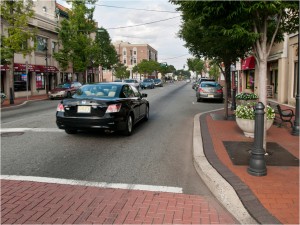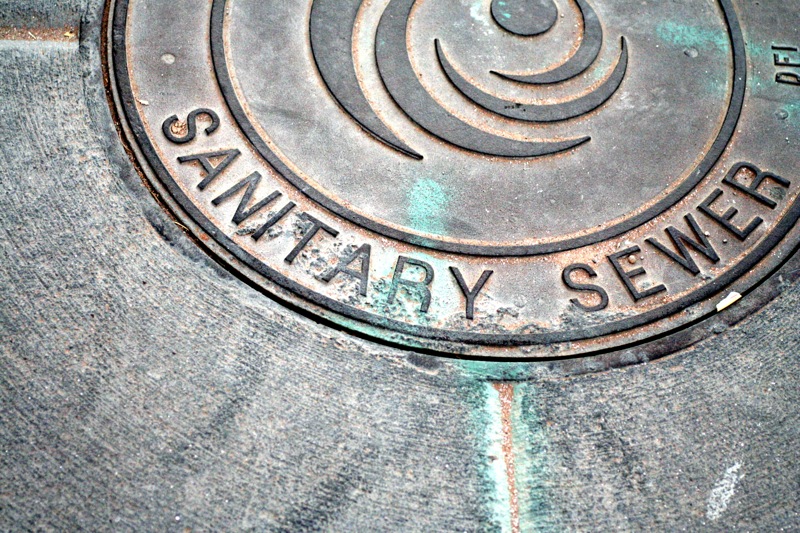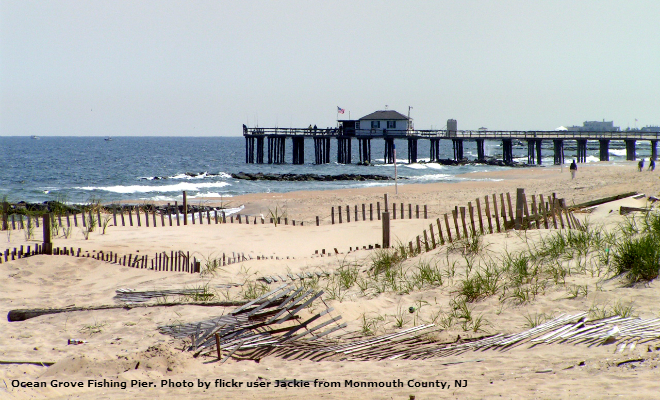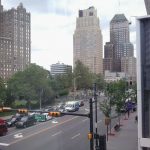New Jersey Future Blog
Complete Streets: ‘A Rational Response to Irrational Thinking’
November 1st, 2013 by Nicholas Dickerson
Strong Towns’ Chuck Marohn addresses the New Jersey Complete Streets Summit
In his keynote presentation before the New Jersey Complete Streets Summit on Oct. 21 at Rutgers University in New Brunswick, Charles “Chuck” Marohn repeated the message that “Complete Streets is a rational response to irrational thinking.” Marohn, who heads Strong Towns, a non-profit, non-partisan organization dedicated to supporting “a model for growth that allows America’s towns to become financially strong and resilient,” used this statement to demonstrate how Complete Streets can help communities recapture investment and retain long-term value after decades of what he considers misguided planning. The “irrational thinking” is his reference to the way planners and communities have tried to perfect transportation and land use design around the automobile, at the expense of the pedestrian and the long-term prosperity of the community.
Marohn echoed the assertion of New Urbanists that we have done a great job at redesigning our landscape around the automobile. He cited in particular the tendency over the last 40 years to put major roads through the middle of communities’ downtown areas. Streets, Marohn says, were once inherently “complete.” They served as what he calls “platforms for capturing and creating value” – downtown hubs for commerce and human interaction. Roads once served as well-designed high-speed connectors between these hubs.
However, this increasing prioritization of the automobile in planning has blurred that distinction, and as a result, Marohn says, we now fail to distinguish our streets from our roads. Regardless of context, road design standards across the board favor wide lanes, wide shoulders, and zoning standards that push development far from the road itself, with the aim of maximizing traffic flow and minimizing traffic-related hazards.
This morphing together of street and road has produced what Marohn described as the “stroad,” a tenuous effort to combine two uses into one. The stroad attempts to make a road “complete” by incorporating street elements such as sidewalks, curb cuts, crosswalks and parking into a system originally designed for regional travel. In so doing, the stroad presents a zero-sum game: Multiple high-speed vehicle lanes discourage pedestrian traffic while traffic lights, curb cuts and adjacent businesses slow traffic and create congestion. The return on investment in a stroad is compromised to the degree that pedestrian elements go unused and regional traffic seeks a quicker alternative. A stroad also encourages development to move farther into the periphery of a community, thus fostering financially unsustainable sprawl.
Marohn sees Complete Streets as a means to return roads and streets to their separate intended functions and to begin to allow communities to recapture the value in their downtowns. To illustrate, he compared a brand-new stroadside drive-thru restaurant to a streetside block of businesses in a downtown area that occupies the same acreage. Even though in Marohn’s example the drive-thru displayed many elements encouraged by planners today – sidewalks to encourage pedestrian traffic and green infrastructure using native plantings to capture and store stormwater – and the downtown business block contained older buildings in varying states of repair housing two liquor stores, a barber shop and a pawn shop, Marohn pointed out that the downtown block still manages to capture more in tax revenue than the drive-thru. The economic model that supports a stroadside business through automobile-dependent sprawl development incentivizes competition further away from town centers, Marohn says, and its physical form hinders the ability to repurpose existing sites as conditions change. On the other hand, the downtown can continue to prosper, since those buildings can be repurposed easily around people’s changing needs. Marohn’s take-home: Instead of focusing on perceived short-term development gains, communities need to focus on land use and transportation decisions that will ensure their long-term prosperity. Complete Streets is one of many tools to help communities realize these long-term gains.

















